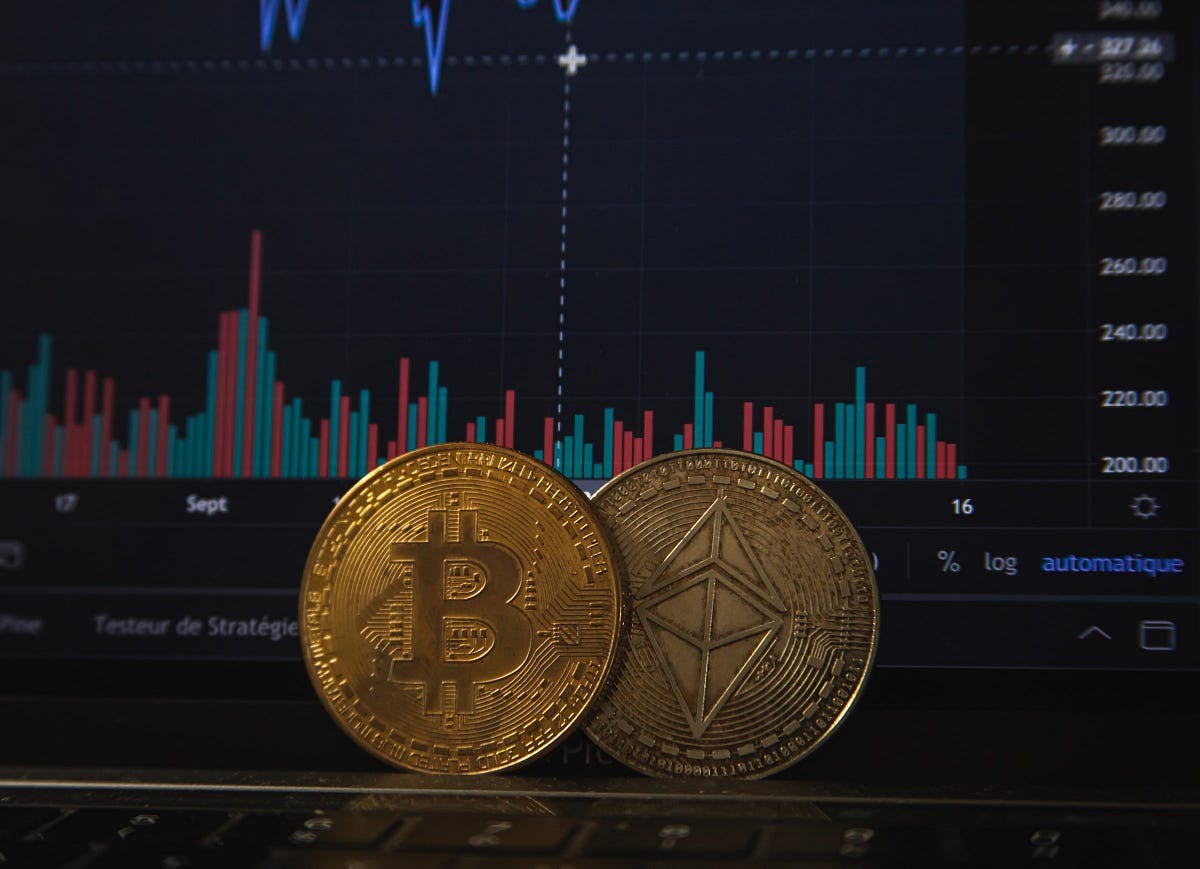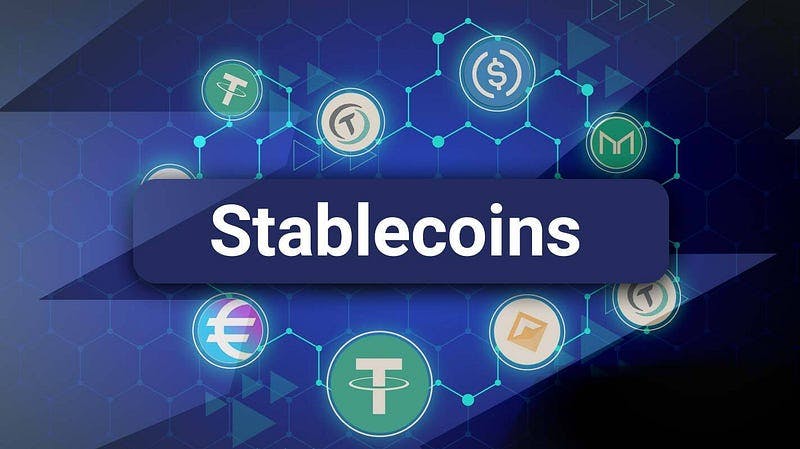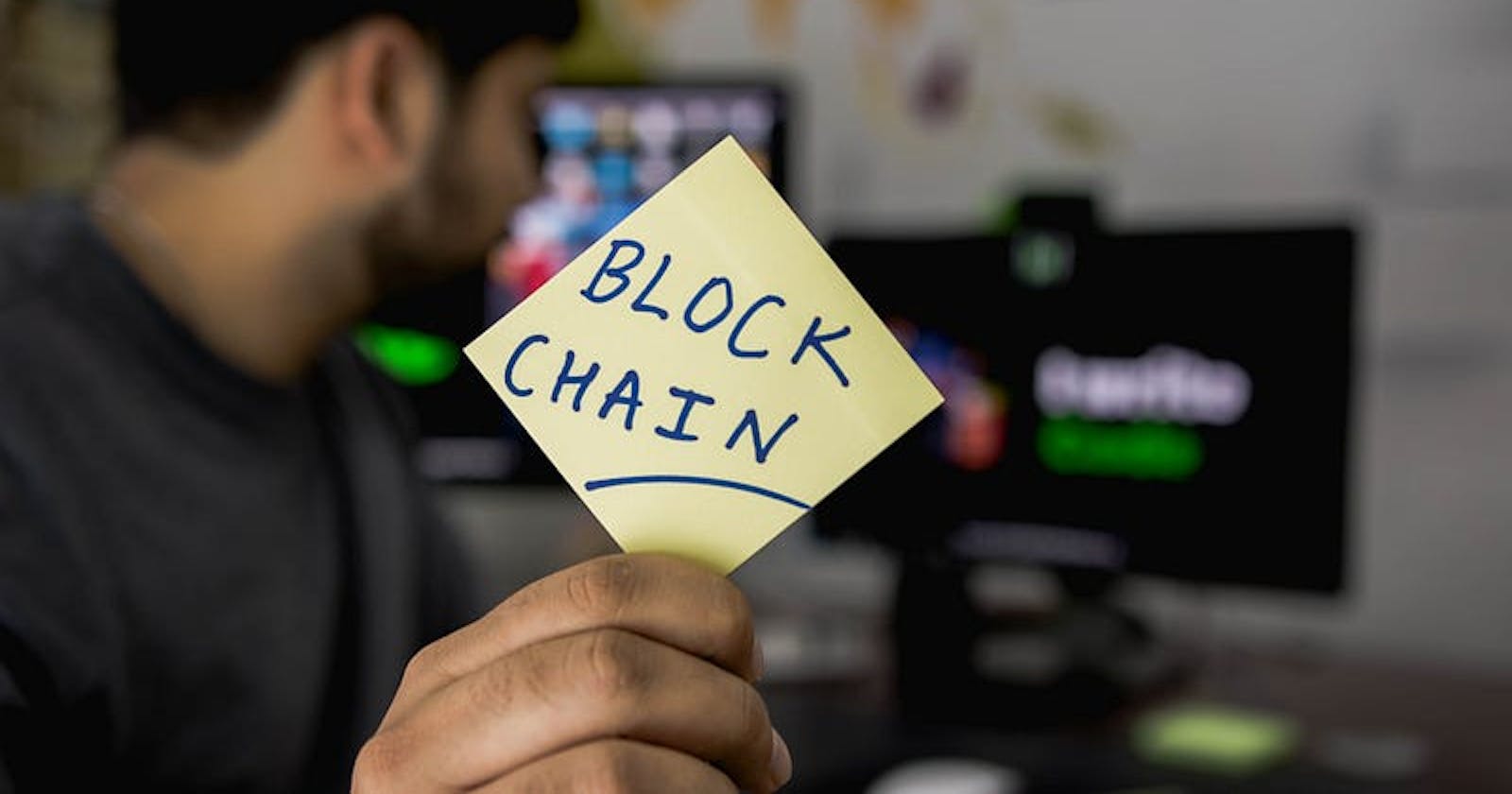Why you need to invest in crypto
Blockchain technology (not Bitcoin) is the digital infrastructure of the future.
You’ve heard the stories. The guy who bought $500 of Bitcoin back when it was selling for $10 a coin, and today his Bitcoin is worth $2M (with Bitcoin trading for $40k/coin in early June 2021).
But crypto is far more than just Bitcoin. Blockchain technology has opened a door for retail investors like you and me to be the owners of the internet infrastructure of the future.
I have just launched a new publication that covers technology and how we can use it to better our lives, including crypto. Come check it out: https://medium.com/digital-native-citizen

These aren’t the only two players in the crypto game. Image credit: Pierre Borthiry.
I have spent a ton of time diving into the crypto space, and I’m hooked. But I have to admit: crypto is naturally pretty confusing to most people who don’t have much tech savvy. So I want to make this space more approachable for others who haven’t really gotten into it yet.
To that end, I’m planning on writing several articles about crypto in the near future. As these articles come out, I’ll add the links here too, and this list is repeated on the bottom of the article. Follow me here on Medium to get those future articles recommended to you.
My Crypto Thoughts:
(This article) Blockchain is the future of digital infrastructure
(Coming soon) Building your first crypto portfolio
(Coming soon) How the De-Fi movement could upend a $100T market
(Coming soon) NFTs: a new frontier in digital copyright
And more to come…
Bitcoin may have been the first, but it definitely will not be the last
Bitcoin was revolutionary in that it pioneered the concept of blockchain technology. But using blockchain to create a currency was just the beginning of this technology.
Block chain technology is the internet of the future. Photo credit: Hitesh Choudhary.
Without diving into the nerdy details, blockchain technology enables decentralizing huge digital markets and services that currently rely on large middle-men companies. This makes things more secure (since there’s not just a single point of failure in a blockchain network), cheaper (no middle men skimming huge profits), and more accessible (blockchains are global by default). This is an opportunity for retail investors to redistribute wealth and become the new supply back-bone of the digital economy, upending the current centralized monopolies run by comic book villains like Jeff Bezos.
Blockchain won’t displace every industry, but it will displace many of the biggest and most important, carving out large percentages of those markets. And you’ll want to be there when it does.
One more time for the folks in the back: “Crypto is so much more than Bitcoin.”
De-Fi: The first real-world use case of crypto
Blockchain technology has the potential to re-define most digital markets in the world. The first application of this technology is something called De-Fi — which stands for Decentralized Finance. I’ll be writing a more in-depth article on De-Fi later, but I’ll give you some highlights now.

De-Fi is global digital financial tools that let you take control of the financial system.
Blockchain developers are creating decentralized financial tools, like investing platforms, exchanges, lending programs, banking tools, and more. These platforms provide financial tools that are often unavailable to many people around the world, and it does so without having costly middle-men.
The traditional financial services market is on the order of 10s of trillions of $$ globally today, and the total assets-under-management (assets currently being invested by investment firms) is over $100T globally. For comparison, the total market cap of the entire crypto space is about $1.6–1.7T right now (early June 2021). De-Fi projects only make up a portion of that, less than $100B right now. And if we consider how big the traditional financial sector is, the De-Fi space could easily reach a market cap of $10T or more in the next 5–10 years, while keeping the traditional financial services market significantly larger than the decentralized market still (which means $10T is a conservative estimate).
That’s a 100x increase in market cap. Meaning if you invested broadly across the space, you could turn $1,000 into $100,000 in 5–10 years.
Again, more on De-Fi in another article, but this is some really promising stuff where you could make a *ton* of money with some smart investing. And this is just the first big crypto technology movement of what I believe will be many more.
So how do you actually buy crypto?
For a long time, buying crypto was a somewhat esoteric process. These days, it has become much easier, but it can still be intimidating for newcomers. Allow me to break it down for you (for US residents).
The first step: turning fiat money (USD) into crypto assets

Photo credit: Austin Distel.
The first step is to find an exchange that allows you to deposit fiat money and buy crypto on their exchange with it. In the US, the big players are Coinbase, Coinbase Pro, Crypto.com, and Binance.us.
My recommendation here is Binance.us. They have the lowest fees: 0% to deposit via ACH bank transfer, and just 0.1% for trades. Now, the interface can be somewhat intimidating, and if it’s too much for you, you can always use Coinbase instead which has a simpler interface (where fees are more like 1.5–4%, depending on the size of transaction). But if you go with Binance.us, it is actually fairly easy to place a simple market buy or sell order on the exchange for whatever crypto you’re interested in. And they have excellent liquidity and are very safe to use.
That’s basically all you need to do to get into crypto. Deposit some money on an exchange and buy some crypto with it. Don’t know what coins to buy? I’m going to write another article soon that will help you decide, but in the meantime, you can start with a simple 50–50 split between Bitcoin and Ethereum and diversify as you learn more. Follow me here on Medium to see it when that article is published.
Becoming a true crypto master (optional for newcomers, feel free to skim or skip this section if this world is already intimidating to you)
Consider this a little bit of a sneak peak of some of the things I’ll be writing about in the future.

One of the many options for crypto passive income is called PancakeSwap. Look it up if you’re feeling adventurous, but I’ll be talking about liquidity pools in a future article too.
Once you’ve purchased crypto assets on a fiat exchange and have gained some comfortability with the space and exposure to the assets, you can start to look into the next steps for your portfolio which involves withdrawing your crypto assets to other places.
The first thing you may want to do is look into other exchanges. There are other exchanges out there that offer access to many more tokens than those found on Coinbase or Binance.us, for instance Kucoin. The catch is that these exchanges don’t have a way to deposit fiat money — you have to trade cryptos for other cryptos.
Without going deep into this (as I’ll save it for another article), you can move some of your crypto from Binance.us to Kucoin (for instance, you could move some Bitcoin), then trade that crypto for other cryptos like LUNA or XRP or CAKE or THETA, etc, etc (none of those are available on Binance.us). This is key for gaining access to a wide array of coins including many of the projects that are a little riskier but have way more return potential. And friendly tip, use a crypto asset called XLM (Stellar Lumens) to move money between exchanges, as the fees are basically zero.
These exchanges may not provide for USD trading, but they do use a concept called stablecoins which are crypto assets whose value is pegged to the value of a fiat currency. For example there’s USDT (Tether) which is designed such that 1 USDT roughly equals 1 USD. This allows you to sell other tokens into stable assets, essentially the equivalent of selling Bitcoin for USD on Binance.us.

Stablecoins are like the bridge between fiat money and crypto. They will likely play an important role in your crypto journey.
The next thing you could do is find ways to use your crypto assets that you purchased to earn more crypto. Many crypto projects offer things like staking, lending programs, and liquidity pools that give you ways to earn interest on your crypto holdings, often in the same token you’re already holding. So you can stake Cardano (token name is ADA) for example and earn 5–6% APY in more Cardano. So your 100 ADA could be 106–107 ADA in a year (depending on the rates and how they compound). You’re getting interest, but also still benefiting from appreciation of the underlying asset too and your interest is paid out in said appreciating asset.
There are even higher yields available when providing liquidity for liquidity pools and participating in lending protocols, but I will write more about that in a separate article. I will link that here when it’s published.
Final thoughts
I hope I was able to help you understand this new digital frontier a bit more and give you more confidence in becoming a crypto investor. We are in the early days of crypto still, and it is not too late to get in and get huge returns on your investments.
Investing in crypto means investing in the digital infrastructure of the future. I believe, very strongly, that this technology is going to revolutionize the world, and that everyone who becomes a part of it today and stays in the game for the long-haul is going to stake out their slice of the supply-side of the market and make a lot of money from doing so. I firmly believe that if you invested as little as $20,000 (intelligently) over the next two to three years in crypto, that your assets will eventually be worth north of $1M, probably within 10 years.
I am going to write a lot more about this topic, so please follow me here on Medium so you will get those articles recommended to you when they get published.
And in the meantime, buy some crypto. Just don’t buy DOGE or some other memecoin please. If you’re just getting started, start with a 50–50 split between Bitcoin (BTC) and Ethereum (ETH). We can expand your portfolio later, but this is a safe start. And please don’t panic sell if they drop by 10, 20, 30, or even 50% or more. Just hold on for the long-term, cause that’s how you make money.
My Crypto Thoughts:
(This article) Blockchain is the future of digital infrastructure
(Coming soon) Building your first crypto portfolio
(Coming soon) How the De-Fi movement could upend a $100T market
(Coming soon) NFTs: a new frontier in digital copyright
And more to come…
Thanks for reading!
Important legal note: I am in no way a financial advisor or fiduciary agent. My words should not be construed as individual financial advice but rather my own opinions and speculations about the future. Always, always, always do your own research and learn about something before investing your money in it. I intend for my articles to simply act as a starting point in your investment research process.

